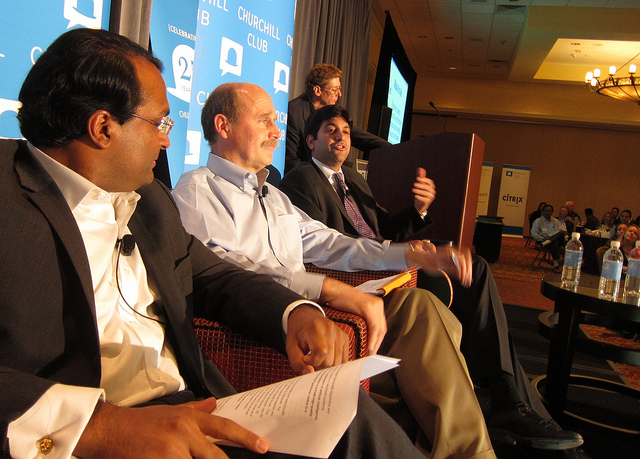Want to Try Trading Online- Here’s CFD’s Explained

Photo by CC user Steve Jurvetson on Flickr.
CFD Trading
Cost for Difference (CFD) trading is an increasingly popular type of trading in which the CFD derives its value from the performance of an underlying asset but not in the asset itself. This makes it a derivative product since it derives its value purely from the change in value of the aforementioned asset. The aim of CFD trading is to correctly speculate which direction the value change will travel over a specific time period. If a trader wants to speculate that a particular stock price will have fallen by the end of the CFD contract period then they would go short (sell). If the prediction is correct then the trader would earn the difference so that if the total exposure was £1000 @ 100p a share and the price dropped to 50p per share, the trader would have earned the price drop (50p) multiplied by 1000 = £500+£50 deposit = £550.
Wide Ranging Market Opportunities
CFD trading can be executed 24 hours a day and exposes traders to global investment opportunities in all of the major markets such as the US, UK, Australia, Europe, New Zealand and Asia. CFDs can also be used in so many individual markets such as indices, commodities, currencies, sectors, interest rates and shares.
Stamp Duty Exempt CFDs
Another advantage of CFDs is that they are exempt from stamp duty within the UK which means a 5% saving on every trade. Irish stocks attract a small fee of 1% but that is easily refundable if the trade is closed out within 30 days. Traders are advised to always keep abreast of current trading laws which can change at any time.
Hedging Portfolios
Traders can also use CFDs to offset losses in their portfolio. This is done by going short (selling) with CFDs on the same stock that is predicted to lose value from the main portfolio. So, if a trader feels they could suffer some losses on their £500 holding in a certain company, they would merely go short with CFDs on that stock to the same value. Consequently, any losses would be offset by the gains achieved with the CFD trade. Please note that this trading style is not for the faint hearted and one should be thoroughly sure about what they are doing before embarking on such a trade. This technique is know as hedging.
The Benefit and Risk of Leverage in CFD Trading
One of the attractive benefits of CFD trading is the mechanism of leverage which allows traders to place large trades using a very small percentage as a deposit or margin. The trading example above was placed with a 5% margin (£50). However, there are risks associated with leveraged products which include the potential to lose more than your initial deposit should the trade go against you. A share price rise to the same amount in the above example would have lost the trader £550. Lose too much and you could face a margin closeout.
Margin Close Out
Margin close out can occur if a trader’s account falls below a specific level and can be executed immediately without warning. During a margin close out the brokerage tries to limit potential losses by closing all open positions relating to that trading account. This means that regardless of current value trades will be closed which could mean substantial losses. Traders should be fully aware of how margins work, the margin rules of their brokers and to avoid margin close out in the first place.
How to Chose a CFD Broker
CFD trading is primarily carried out on the internet using online brokers. The main advantage of online CFD trading is that many online brokers offer demo accounts where prospective traders can use their online platform to test the dashboard and also practice real trading. Some of the more reputable firms, such as CMC Markets and other established online brokers, offer a host of online training resources and practice opportunities. Be sure to properly research all online brokers under consideration to make sure you understand their terms and conditions and avail yourself of all training opportunities.
How Do I Start Live Trading?
After trialing the platforms of a couple of well researched online brokers, where you would have used dummy money during practise, all you have to do is switch to a live account and place your initial deposit. Now you have begun live trading where you can make real profits and real losses too.
Good luck!




